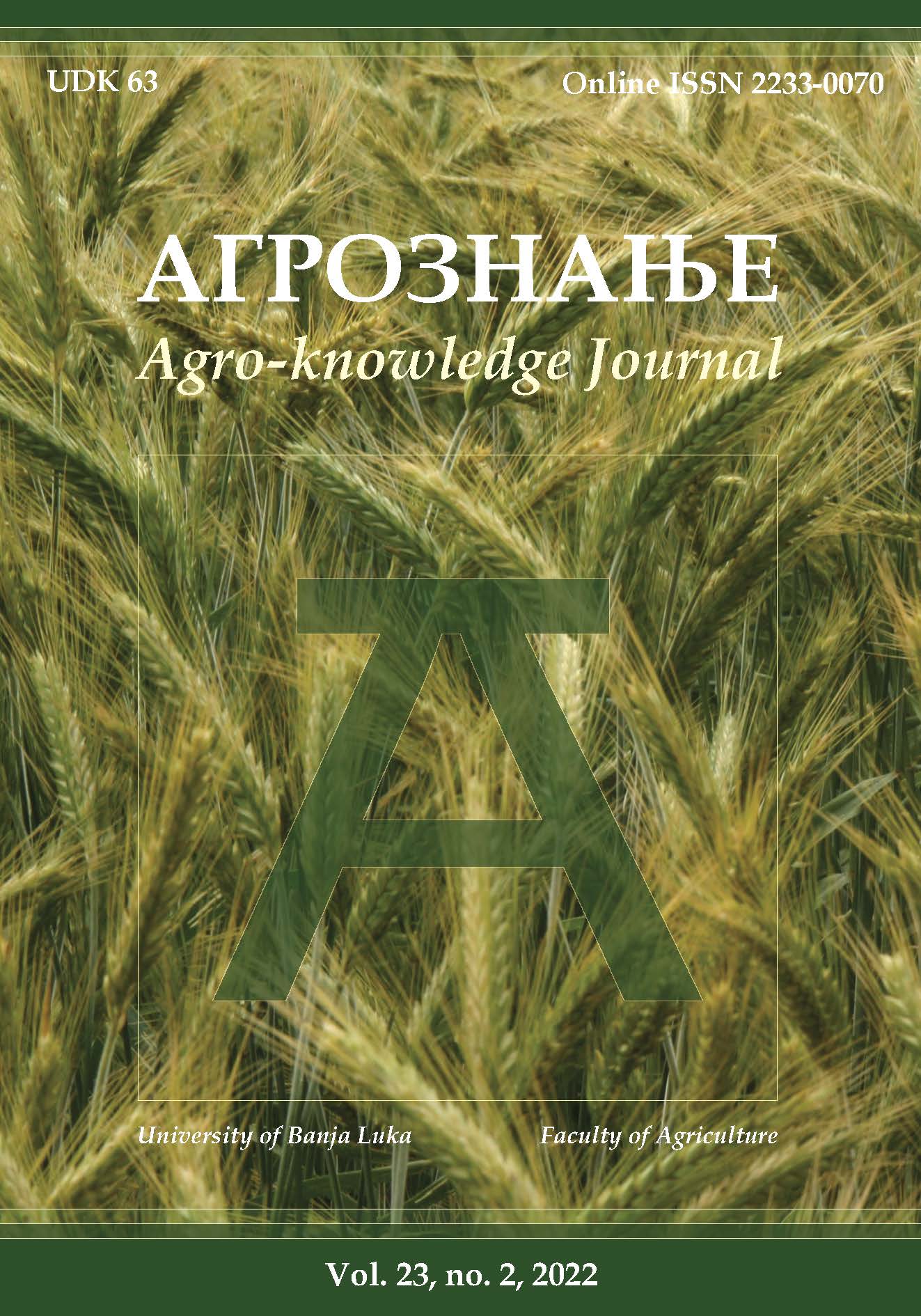Nutraceutical and multi-element profiles of elephant garlic (Allium ampeloprasum L.) and common garlic (Allium sativus L.) from Slovenia
Нутритивни и елементални хемијски састав лажног бијелог лука (Allium ampeloprasum L.) и правог бијелог лука (Allium sativus L.) поријеклом из Словеније
DOI:
https://doi.org/10.7251/AGREN2202057SAbstract
Bulbous Allium spp. such as “big-headed” elephant garlic (Allium ampeloprasum L.) and common garlic (Allium sativus L.) contain a wide range of bioactive compounds with health-promoting properties and are most commonly used as food seasonings. The objective of the present study is to verify if there is a difference in selected nutraceuticals (dry matter, TPC, and allicin) and elemental profiles (macro- and micro-elements) of the two Allium species produced in two growing seasons in Jablje, Slovenia (a sub-Alpine region). The total phenolic content (TPC) was determined spectrophotometrically, the organosulfur compound allicin was determined by the HPLC analysis and the multi-element profiles by an inductively coupled plasma-mass spectrometry (ICP-MS). The results show that elephant garlic bulbs had slightly lower TPC and about six times less allicin, a major organosulfur compound. The content of macro- (Mg, P, S, K, and Ca) and micro-elements (Cr, Mn, Fe, Co, Cu, Zn, and Mo) varied considerably among the Allium samples studied. The greatest differences between bulbs of elephant garlic and common garlic were observed for P, Ca, S, and Fe. Our results confirm different nutritional characteristics of the bulbs and cloves of the two Allium species.
Key words: allicin, Allium spp., ICP-MS, macro-elements, total phenolic content.

